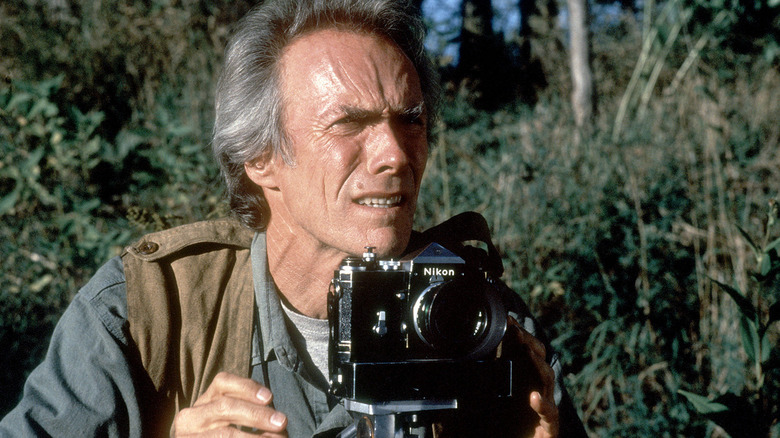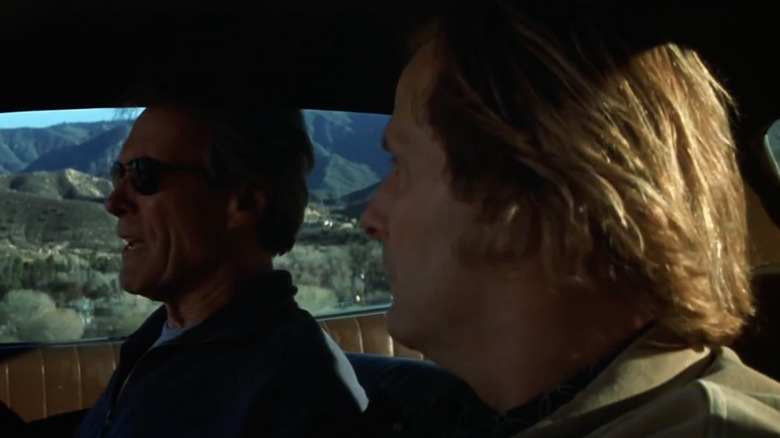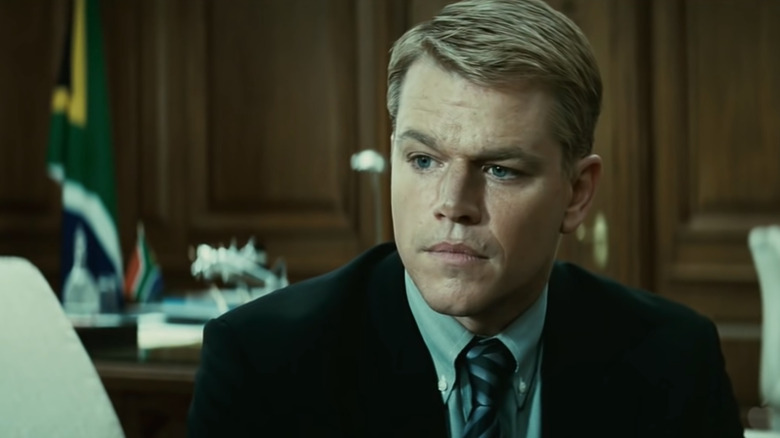Actors Rarely Get Second Chances On Clint Eastwood's Sets
Clint Eastwood has been a celebrated director for over 50 years, winning the Best Director Academy Award for "Unforgiven" and "Million Dollar Baby." Working on his film sets are unlike any others. An Esquire profile details how behind the camera, Eastwood is an authoritative yet calming presence that cultivates a fast-paced but not rushed work environment. "He never raises his voice, and never has to. Nobody argues with him. Nobody challenges him. It's simply not done, and when it is, it is remembered," Esquire writer Tom Junod notes. Eastwood elaborated on the importance of this type of workplace setting in the book "FilmCraft: Directing" (via Indiewire):
"For me, it's very important to have a comfortable and calm environment on set. It's important that the actors are submerging themselves into the character to the greatest degree and the best way to do that is to give them full confidence and ensure they don't feel like they're riding a ship that's on the brink of disaster."
Eastwood also treats his crew members like family, often adhering to a 9-to-5 schedule so they can spend time with their loved ones. He uses the same crew for most of his films, providing opportunities for career growth and creating close collaboration on a smoothly running set.
But perhaps the most surprising fact about working with the director is he frequently uses first takes, expecting his actors and crew to be fully prepared for the moment of shooting so he can get what he wants as soon as possible. He also lets the camera run until the actor breaks character, and instead of saying "Cut," he says, "Let's move on." Although the process sounds hasty, Eastwood has strong reasons for wanting to film this way.
Natural reactions from actors
Jeff Daniels, who starred in "Blood Work," remarks on Clint Eastwood's speedy shooting process in The Telegraph:
"You know you have to be ready because it's one take. And you can't believe it. You're told and you're ready and there it is. You get one take, and you move on. You're just like, 'Really?' And he goes, 'Oh, we're good.' And by the time you ran that little two-line exchange, the camera's already being moved and lights are being taken down. Lunch is being served."
This is quite different from other notable directors such as David Fincher, who makes his actors endure nearly 100 takes. Eastwood's methods also oppose the Meisner style of acting, which purports that the more actors repeat dialogue, the more natural it becomes. He feels otherwise, arguing in DGA Quarterly that with first takes, "It seems like [the actors are] saying it right away, instead of saying it for the 50th time."
He elaborated more on his directorial techniques to Esquire:
"Artistically, though, I like to see the person the first time the situation ever crosses their brain and the first time it goes through their eyes and the first time the words come out of their mouths. I've seen great actors do amazing things on the first take."
Moving at a business-like pace
One of the most important reasons Clint Eastwood likes to use first or second takes is because he is prudent about staying on schedule. As Matt Damon told Esquire, "You have to beg him for a second take. I did once, and he said, 'Why, so you can waste everybody's time?'" But Eastwood does not want to be misconstrued as someone who rushes: "It's more that I want to get the feeling that we're moving. You have to keep the crew and the production going at a business-like pace so they get the feeling they are part of something that's actually moving forward" (via IndieWire).
Eastwood's economical style of filmmaking was inspired by the quick pace of his television days on "Rawhide" and working with esteemed directors such as Sergio Leone and Don Siegel. He learned how to manage a set in a prompt and fluid manner. By surrounding himself with crew members who know his expectations and artistic style, Eastwood's film sets are a well-oiled machine. He understands how both time and money are precious commodities in show business. And for the actors that work with him, this just means they need to be prepared enough beforehand to deliver a strong performance right off the bat. There is no time to search for emotional truth — it has to be there already.


